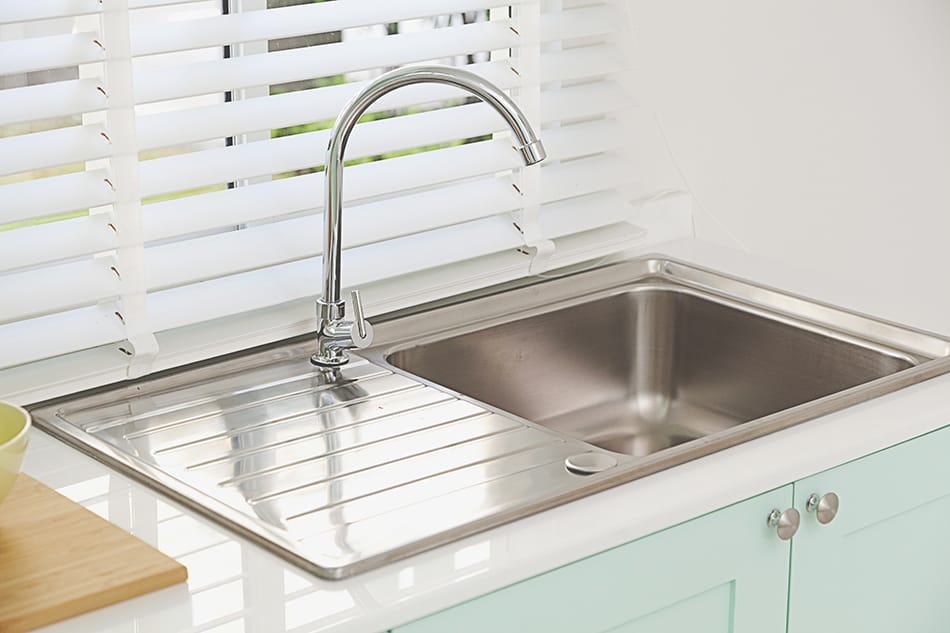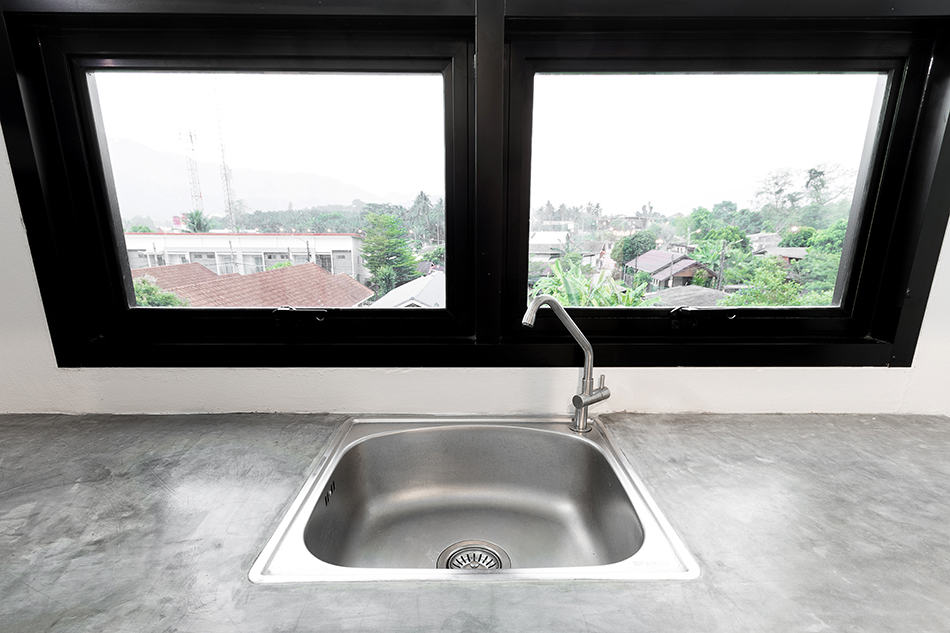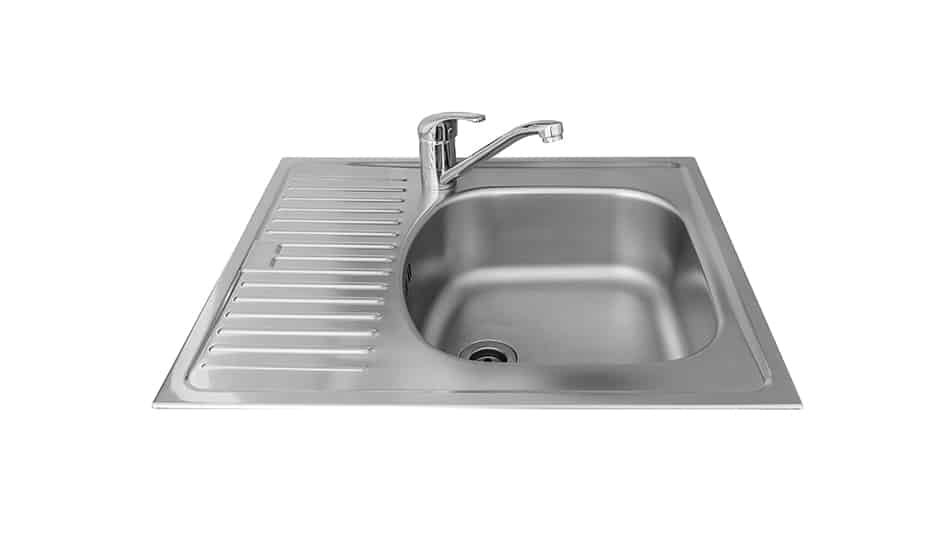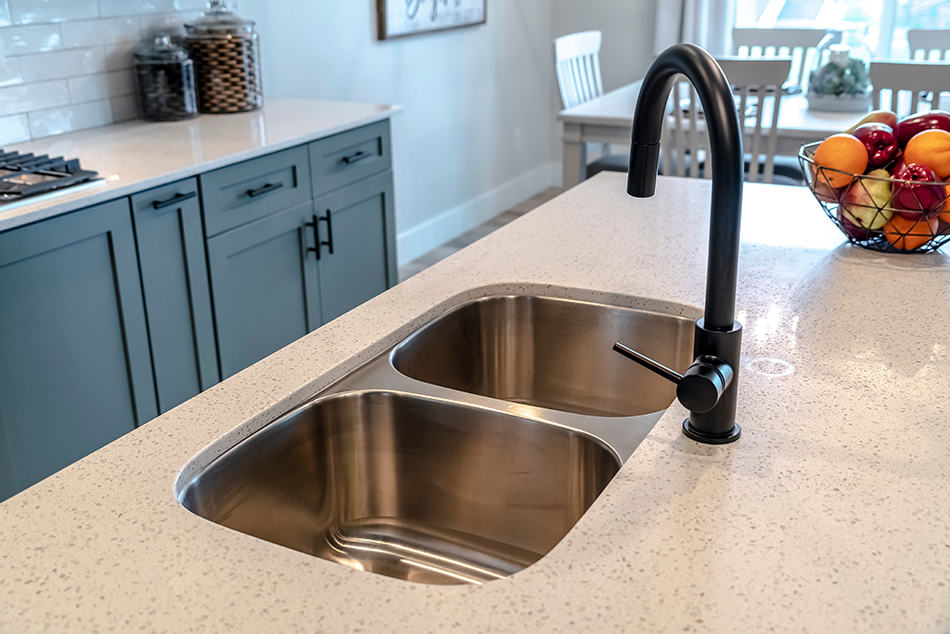If you are renovating your kitchen or want to replace an old sink, you’ll need to understand kitchen sink dimensions. While there are some standard sizes, these can vary among the kitchen sink anatomy, design, and manufacturer. The most important thing to consider when buying a sink is that the dimensions correlate with the dimensions of your kitchen sink base unit.
To do this, you should measure your current base unit and find a sink that is a few inches smaller to allow space around it, or check the measurements of your new base unit.
Standard Kitchen Sink Sizes
Kitchen Sink Width
The width of a kitchen sink (the measurement from the front of the sink where you would stand to wash up to the back where it is closest to the kitchen wall) is a standard size of 22 inches.
This is because kitchen base units have a standard depth of 24 inches, allowing the sink to comfortably fit within the unit frame. You can also find kitchen sinks with a width of 20 inches, but this is less common
Kitchen Sink Depth
For optimal functionality, your kitchen sink should have a bowl depth of at least 7.25 inches. The standard depth is around 8 to 10 inches, which provides ample space for washing larger dishes without water splashing onto the countertops.
- Minimum depth: 7.25 inches
- Standard depth: 8 to 10 inches
Kitchen Sink Length
The standard length for a kitchen sink is 33 inches. However, the length can vary depending on the number of bowls and the design you choose.
Common Kitchen Sink Types & Their Dimensions
You can find below the diagram that illustrates the kitchen sink dimensions, including standard kitchen sink sizes, average single-bowl sin dimensions, and average double-bowl sink dimensions.
Standard Sink
Standard commercial kitchen sinks usually have a single bowl and come in two sizes: 33 inches or 36 inches in length. These sizes fit the standard kitchen sink base units. The common 22 by 33-inch sink, with one or two bowls, offers some countertop space alongside the sink. The 36-inch length sink occupies the entire workspace over the base unit.
Average Single Sink Dimensions
For kitchens with limited space, a smaller single-bowl sink is preferred. These sinks are typically 28 to 30 inches long, 19 to 20 inches wide, and 7.25 to 8 inches deep.
Average Double Sink Dimensions
Commercial sinks with a double bowl can reach up to 48 inches, and these will need to be fitted into a double sink kitchen unit. However, typically you can also find most models with double bowls on the market with lengths ranging from 30 inches to 48 inches.
The sink size you choose between these two options will depend on the design of your kitchens and your preferences for both style and functionality. There are several other sizes of kitchen sink available to suit more bespoke needs, but these tend to be considered as non-standard sizes.
Undermount Kitchen Sink Dimensions
The average size of an under-mount kitchen sink is 22 inches in length and 30 inches in width. When a sink is under-mounted, it will be fitted beneath the surface of the countertop so you can’t see any of the sink’s edges. However, when an undermount sink is measured, you need to take into account the measurement from the edges of the rim, rather than the edges of the inner basin.
Farmhouse Sink Dimensions
Farmhouse sinks give a rustic aesthetic to a kitchen, and they also work well in traditional style decor. Farmhouse sinks can vary enormously in size, from small farmhouse sinks measuring around 20 inches in length up to larger farmhouse sinks with as much as 60 inches in length.
The height of a farmhouse sink is an important measurement to consider because your kitchen cabinets need to be specifically designed to accommodate the height of the sink. With a farmhouse sink, the front wall of the sink will be on display, and it needs to drop down to where your under-sink cabinet door starts. The average height of a farmhouse sink is 10 inches.
Corner Sink Dimensions
Corner sinks are quite common as a space-saving measure in a bathroom. However, kitchen corner sinks are not widely available. A corner kitchen sink can work well for some kitchen designs, especially in compact kitchens where the workspace is limited.
The common size of a kitchen corner sink is 31.5 inches. This means that it will take up 31.5 inches of counter space, but the sink itself will be smaller to account for the corner edge being flattened off.
Oversized and Compact Sinks
The sink size you choose between these two options will depend on the design of your kitchen and your preferences for both style and functionality. There are several other sizes of kitchen sinks available to suit more bespoke needs, but these tend to be considered as non-standard sizes.
Oversized Sinks
When considering an oversized sink, you may find single sinks with a length measurement of 36 inches or more. These are ideal for large kitchens where standard-sized sinks might look out of proportion. Additionally, oversized sinks are commonly found in commercial kitchens due to higher volumes of washing up. Some advantages of oversized sinks include:
- Accommodating larger pots and pans
- Giving your kitchen a luxurious, high-end feel
- Providing ample space for washing activities
Compact Sinks
Compact sinks are a great choice for small kitchens or designated food prep areas. These sinks can have lengths as short as 9 inches, though a more common measurement is 24 inches across. Compact sinks offer:
- Flexibility in small spaces or kitchen islands
- Efficient use of countertop space
- Separation of fresh produce washing from dirty dishes
Kitchen Sink Bowl Types
Single Bowl
A single bowl sink features one basin. It is ideal for you if you wash large items like pots, pans, and baking trays. The generous sink space provides enough room for them to soak.
Single Bowl and Drainer
In a single bowl and drainer sink configuration, you get a basin on one side and a grooved surface area for drying on the other side. It typically measures the same as a double sink (46 inches in length) but can be fitted on either a single or double kitchen base unit. The drying area doesn’t require space beneath it as a sink basin does.
This type of sink is great for:
- Soaking and washing items
Convenient drying area with a slight slant for water drainage
Double Bowl
The double bowl sink setup has two basins side by side. It’s useful for separating your washing tasks, such as soaking casserole pans in one bowl and washing plates and cutlery in the other. It also offers flexibility in accessing water.
A double sink helps you:
- Divide washing tasks
- Use one bowl for dirty dishes and another bowl for other tasks
Triple Bowl
A triple bowl sink features three bowls in a row, often in varying sizes. Two moderately sized bowls may be joined by a smaller one in the middle. Although not the most popular choice, triple bowl sinks are available in 46-inch lengths for a double kitchen base unit or larger custom kitchen cabinets.
Pros of triple bowl sinks:
- Three bowls for versatile washing tasks
- Option for custom kitchen cabinet sizes











